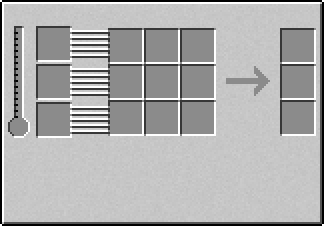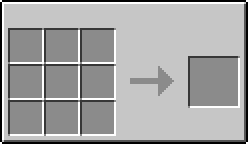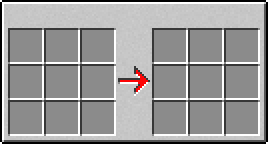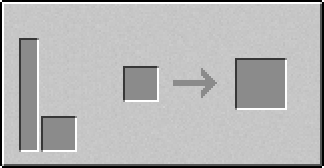| This article is a work-in-progress. It may be finished in the near future, check its history to see previous edits. |
| If you find any information that is outdated or incorrect, please create a section on LC14199's Talk Page with details about the incorrect information, and what it should be. |
RotaryCraft[]
RotaryCraft (also known as RC or RoC) is a technological mod based on realism and power transmission through shafts. It has uses in automating many tasks, such as ore processing, mining, and farming. The main differentiating features of RotaryCraft are the high-tier machines and the new power system.
Before getting started with RC, it is best to obtain the RotaryCraft Handbook which contains information on the mod, the Screwdriver which is used to change the direction in which machines face (green is input, red is output), and the Angular Transducer which gives information on the machines.
What mods will work well with RotaryCraft?[]
RotaryCraft allows shaft power to be converted between Minecraft Joules (Buildcraft), Energy Units (IndustrialCraft 2) and Redstone Flux (Thermal Expansion). Also remember that all of Reika's mods generally play well together, and so you may have a better experience overall with ReactorCraft and ElectriCraft installed as well as RotaryCraft. At some point of your progression you will need the Silk touch enchantment. So EnchantingPlus would be useful.
What should I have before I begin?[]
To start with RotaryCraft, you will need quite a few stacks of iron (You'll burn through iron extremely quickly due to the high amount of steel used in most recipes), a few stacks of dirt, a few pieces of sand, a bucket of Lava, some gunpowder, Ender Pearls, sugar cane, and gold. Leaves can also be useful. Having access to the Nether will be a requirement shortly after starting with RotaryCraft.
The Power System[]
The power system in RotaryCraft is based on rotational power from the real world. It uses torque (Newton meters) and speed (Radians per second) to power machines. When multiplied together, the resulting power unit is Watts. Torque and speed can be transmitted through gearboxes and shafts, which are explained below.
Gearboxes and Shafts[]
Gearboxes and Shafts come in five tiers: Wood, Stone, Steel, Diamond, and Bedrock. Shafts are used to transmit torque and speed, which will be referred to as power throughout the rest of this guide. No power will be lost, no matter how far the power is transmitted. Each tier has a different maximum power that it can carry. Stone will be sufficient for most of the early machines. Bevel Gears are used to change the direction of power transfer around corners, and will be needed for machines that must be powered from below (Extractor, Fractionation Unit, etc...)
Gearboxes are slightly more complicated than Shafts. They require Lubricant, except for the wooden gearbox, whose only requirement is to be kept cool. All gearboxes below diamond level will continuously consume lubricant, while a diamond gearbox will only require a single bucket. Bedrock gearboxes do not require lubrication, with the High-Ratio Gear being the exception. Gearboxes have different modes: speed and torque. In speed mode, they reduce the torque and increase the speed. They do the opposite in torque mode. For example, a 8:1 ratio gearbox set to speed mode will divide the outgoing torque by 8, and multiply the outgoing speed by 8. To change the mode, sneak right click with a Screwdriver.
Due to there being a large number of different types of gearboxes, (Different materials and different ratios), to learn more about Gearboxes you can visit the gearbox page here which shows the recipes for the different types of gearboxes.
If Botania is installed you can also craft two other gearboxes: Livingwood and Livingrock. The livingwood gearbox is unique because it repairs itself over time on the condition that it is not transmitting power. Livingrock gearboxes can also repair themselves when not transmitting power, though they require Mana to do so.
Power Storage[]
[Insert Industrial Coil recipe]
Power can be stored in an Industrial Coil. Accessing the UI will let you change the power output setting. The coil will only output power if it is receiving a redstone signal. It cannot receive power when it is outputting power, and vice versa. There are two versions of the Industrial Coil: Steel and Bedrock. Be aware that the amount of torque and power required increases as the power stored in the Industrial Coil increases.
Warning: The Industrial Coil has a maximum energy that it can store! It will explode if you attempt to pass this limit!
Steel Industrial Coil: Max storage 720 MJ, Max output: 1024 Rad/s and Nm
Bedrock Industrial Coil: Max storage 240 TJ, Max output 4096 Rad/s and Nm
Getting Started[]
If you have some basic materials set-up, and you somewhat understand the power system, then it's time to get started! The first thing you will want to make is the Blast Furnace, so that you can obtain HSLA Steel Ingots.
Put the Blast Furnace over a source block of lava, and next to a fire, and let it heat up to 600ºC. (The fire is necessary in cold biomes, or at high Y levels, and is helpful in any case). You can see the temperature of the Blast Furnace in the UI. When it is sufficiently hot, you will need to put gunpowder, sand, and coal into the Blast Furnace, as well as iron in at least one slot, but preferably all 9 center slots as it will be faster to make large amounts of steel, and also more efficient. Gunpowder and sand will occasionally be used, while coal will be used in every cycle. Smelt a stack of iron into HSLA Steel. You will receive some experience, about .80 per steel ingot. It is recommended to turn coal or charcoal into coal coke for use in the Blast Furnace, as coal coke decreases the chances of gunpowder and sand being used up by 50%, and it also gives a chance for extra steel in the output. To make coal coke, simply place coal or charcoal in the Blast Furnace by itself.

9
9
Now that you have HSLA Steel, it is time to create the Worktable. The Worktable is the RotaryCraft equivalent of the Crafting Table. This is where you will craft the machines of RC. Note: Most parts used for machines can be made in a standard crafting table, but crafting the machines themselves requires the worktable. There is also a config option to allow machines to be crafted in a normal crafting table instead.
Powering Time[]
The first three engines you will be able to use do not consume fuel: The DC Electric Engine (powered by redstone signal), the Wind Turbine (powered by "wind") and the Steam Engine (powered by boiling water). The DC Electric Engine has a limited power output however the Fermenter and most auxiliary machines (Eg, the autocrafting unit and the fluid crystallizer) can be powered using this engine (although more power will decrease the crystallizer's operation time). The Wind Turbine requires a minimum altitude of 128 for maximum efficiency, making it useful for bases in Extreme Hills or other high altitudes. Its uses tend to follow that of the DC Electric Engine which make it great for powering auxiliary machines. The wind turbine works particularly well for auxilary machines where speed is an issue, however the large open area in front of the turbine that is required for operation limits its uses. The Steam Engine requires a Pump and a trip to the Nether for Netherrack or lava and a Cooling Fin. (note: If the steam engine is heated by lava, it will increase water consumption by a factor of 4.)
Yeast, Sludge, and Ethanol Crystals[]
Many players won't have access to the Nether at this point. Therefore, we will use the DC Engine and the Fermenter to move along and a steam engine with a cooling fin on a pump to keep on going. If you do have access to the Nether, use a piece of Netherrack with fire instead of the cooling fin and lava. The Fermenter will require water to work. To create Yeast, put dirt and sugar in the Fermenter, and run until you have about a stack of Yeast. Apply a redstone signal to the Fermenter, and you will be able to create Sludge. Insert the Yeast and any plant material to create Sludge. Then, smelt this sludge to get Ethanol Crystals.
Pro tip! Magic leaves, such as the ones from Thaumcraft 3/Thaumcraft 4, and the Twilight Forest can produce up to 64 sludge per Yeast and Rainbow Leaves from ChromatiCraft produce 8 sludge per leaf. Other plant materials may only create up to 2. Using leaves will always produce two times more then the sapling version.
Ore Processing[]
The Grinder is one of the most useful machines in RotaryCraft. It is used to triple ores, create Lubricant, and create the base materials for Jet Fuel. First of all, we will need to power it. Remember those Ethanol Crystals you got while smelting sludge? Get those back out. Also, get some gold and craft a Gasoline Engine. This engine will give you just enough power for the Grinder. The Grinder will take 17.95 seconds to grind an item while the Ethanol Crystal will power the engine for 60 seconds. This means that a single stack of items being ground will cost 19.14 Ethanol Crystals, or 20, if you round up, in the same amount of time! Unfortunately, the Grinder is a fairly slow machine. However, it is an important machine for acquiring the large quantity of materials needed by RotaryCraft. For mass ore processing, you will probably need more than one Grinder, or a better way to power it! Another way to power it which is equivalent to the gasoline engine, will involve four steam engines and four Shaft Junctions. The junction can be oriented with the Screwdriver.
Farming Basics[]
The first step in getting lubricant is farming Canola. Go punch some grass and bring back a few Canola Seeds. Bone Meal would be useful at this point. You will probably need some more HSLA Steel as well. Now, make a 9x9 Canola farm. It will cover your lubricant needs.
Note: You don't need to automate it; you can make do with a manual farm.
To make an automatic 9x9 farm in RotaryCraft you will need: 4 Steam Engines, 3 Fans, 3 Clutches, 1 Item Vacuum, some water, some fire, 1 Hopper, 1 Chest, 1 Redstone Comparator, and some Redstone (Redstone, Comparator, Hopper and the Chest can be exchanged with any "Stop when overflow system" like ComputerCraft or Applied Energistics).
- Make your 9x9 farm.
- Place a Fan on the second, fifth, and eighth rows.
- Behind each Fan, place a Clutch. Then, a Steam Engine with fire/Netherrack under, and water flowing in the back.
- On the other side that you placed the Fans, place the Item Vacuum with the Steam Engine powering it.
- Place a Hopper under it, with the output side facing the chest.
- Put the Comparator going out of the hopper in Subtraction mode.
- Invert the signal and make a redstone wire to the Clutch. (I've put the torch under the clutch which seems to work, other ways of monitoring this farm are recommended)
The Comparator will give a positive redstone signal when the Hopper gets filled and will stop the Clutch. The Fans will then stop running.
Note that the Clutch will let the power out when it has a positive redstone signal.
Now, we need to get the lubricant!
Note: This is only one row of 3, you can triple this fan setup without needing another water source block or a better item vacuum.
Note 2: The fan will only push the items in the row right in front of it, but will harvest each one beside it.
Lubricant[]
Remember that slow machine that tripled your ores? The Grinder? Well, I hope you do, since you will need it now! Create a Reservoir, or any tank system you want, and a Lubricant Hose, or another liquid transport solution. Place the Hose under (In later version, it will also work from sides) the Grinder and pipe it to your Reservoir or tank. You need at least one Hose to move the Lubricant. Get yourself a stack of Canola Seeds and put them in the Grinder. Don't forget to put Ethanol Crystals in the Gasoline Engine!
The Lubricant will be used in the Gearbox, but also in a powerful but costly engine called the Hydrokinetic Engine. These engines cost about one stack of HSLA Steel each, and their power needs to be passed through a gearbox or transmitted with a Diamond Shaft or better.
Smelting[]
RotaryCraft has two main ways to smelt items: The Friction Heater and the Lava Smeltery. They both require power, but the Lava Smeltery also requires lava. The Friction Heater, when connected to a Furnace and powered by a Steam Engine will let you smelt for free, though it will be quite slow. The Lava Smeltery is a very quick smelter, smelting up to 18 items at one time and is the easier machine to power out of the two. The Rock Melter can be used to get lava for the smeltery. To keep up with the smeltery, the rock melter will need a decent power input (Gasoline Engines are a good starting point) and the use of Netherrack. It's powered from the bottom requiring a bevel gear. You can use a steam engine to power it. It's recommended to have a good amount of lava before starting to use the smeltery since it will consume it as soon as you input the lava.
[Insert Lava Smeltery recipe]
Note that the lava smeltery is not affected by the speed of the engine powering it. It requires 2048W. Any engine will be able to power it.
Tip: A boring machine (see below) in the nether will net you a ton of Netherack, even on low speed. A pump can also be used to get lava.
Semi-Advanced RotaryCraft[]
Into the deep[]
Now that you have ore tripling and easy smelting, it's time to start gaining some resources. Build a Boring Machine, as well as a Scalable Chest or any other storage device. (Note that you need at least one chest beside the boring machine) Powering the Scalable Chest with one steam engine will give you 105 inventory space > will allow it to store 105 stacks of items. Two steam engines increases this to 233 slots, while four of them, or a gasoline engine, will get you an impressive 489 slots. More power can increase this farther, but it is capped at 560 slots. Go to around y=10 and make yourself a small room to work with. Place your Boring Machine and open the GUI. The X represents the borer position. Every square you click will be one that will be mined. It will mine in front of it up to 2 million blocks away, after which it will jam. You can go with "strips" and mine in the walls after, get every block possible or do any combination you like! The borer will need 512 Nm of torque and will need about 32 kW of power, which is 62.5 Rad/s minimum. This is about 40 seconds per movement. With Geostrata installed, you will need more then 512 Nm to get the full 7x5 mining area. Four gasoline engines will provide 512 Nm of torque which can easily mine a 5x4 area without problem. One last item you might want, is a Floodlight. The power of a DC Electric Engine will be enough for a good distance! It will help to keep your mining operation safe from mobs.
The Scaleable Chest is optional. You may use any kind of chest. The floodlight is also optional, but will protect you from spawning a load of mobs in there. There is also another machine that can be used for automated mining, The Sonic Bore. While it uses less power, this machine drops the items instead of putting them into inventory storage. So depending on what you're trying to achieve, will decide which machine you use.
Note that the Boring Machine, when it has enough power, will mine up to 700 blocks per second, or 35 per tick.
Tip: The Boring Machine can be enchanted with enchanted books. The same enchantments you use on a pickaxe can be applied to the boring machine.
Jet Fuel, some crazy liquid[]
Before you get into this section, you will need a trip into the nether and get one ghast tear and a stack or so of netherrack, soul sand, blaze rods and slime balls (or magma cream). Make a Performance Engine, an 8:1 gearbox (Stone is enough, unless you use a 16:1 for more speed) and a Fractionation Unit, with some fuel lines or fluiducts (Recommended to use a tank or reservoir with fluiducts since fuel lines have unlimited storage in them, although be careful to ensure the throughput of the pipe you use is able to handle the output of the Fractionation Unit. During high speed operation eg 0.05s, many pipes will struggle to move the Jet Fuel out of the machine fast enough). Go back to your grinder and grind a few netherrack and soul sand to get netherrack dust and tar. You will need to turn the blaze rods into blaze powder (Use a grinder for this, you get 6 blaze powder per blaze rod) and make a few magma cream. Finally, get some ethanol crystals and coal. Place your performance engine, your 8:1 gear on speed mode (Shift-click with a screwdriver), a bevel gear and the unit. Don't forget to lubricate your gearboxes. Place a ghast tear and a few of each: Netherrack dust, Tar, Ethanol crystal, Blaze powder, Magma cream and Coal. You can now activate it. It's recommended to pipe the jet fuel into a tank for future use.
TIP: When making the Performance Engine, you can get the Silicon Powder required for the Aluminum Alloy Ingots by centrifuging Clay blocks in a Centrifuge. You can also make Silicon Powder in a Blast Furnace.
Note that a Performance engine with an 8:1 gearbox on speed mode will get you the required power for the Fractionation Unit. This will require some Ethanol crystals and redstone/gunpowder/blaze powder. After you get going with Jet Fuel, you might want to get a microturbine to power it.
Getting Tungsten[]
- Complete Re-Write Coming Soon -
Unbreaking[]
Next step is to get the Bedrock Breaker up and running. You have three main options for this: Two microturbines with 2 16:1 Gearboxes and a 2:1 Gearbox, all set to torque mode (4 MW), A tier 4 Magnetostatic with 8:1 gearbox on torque (8 MW) or a gas turbine with an 16:1 gearbox on torque (65MW). Note that the bedrock breaker requires a large amount of power to get to 0.05s operation and so therefore it's recommended to have a few running at the same time, instead of having one at the absolute maximum speed.
Ingots[]
To get bedrock ingots, you will need a blast furnace at 1000 C and four bedrock dust and a HSLA Steel ingot in it. You will need a friction heater to achieve this temperature. It will need 512 KW > 1024 KW of power to achieve this temperature. Note that there is an efficiency bonus if the torque and speed are the same value. Industrial Coils can be used to achieve this.
Ex: A friction heater with 8192 rad/s and 16 Nm will be less hot then one with 512 rad/s and 256 Nm which will be less hot then one at 512 rad/s and 512 Nm.
Tools[]
Most of the bedrock tools have a special ability. The bedrock pickaxe can mine spawners, the bedrock sword has Looting 5 and Sharpness 5 and the bedrock axe will chop down an entire tree in one go (Even for massive trees). The bedrock shovel has a chance to drop bonus items, for example: seeds, gunpowder, glowstone, and netherwart, etc. They are all unbreakable and can all be enchanted.
Other use for Bedrock[]
Bedrock is very useful. It can be used to make armor pieces, gearboxes and CVT Units. The gearboxes made out of bedrock are unbreakable and do not require lubricant. They allow infinite amounts of power to flow through them, like the bedrock shaft. The High-Ratio gear is basically a 256:1 gearbox, but will consume lubricant in a large quantity. The CVT Unit is a redstone toggle-able gearbox and is very useful for an efficient extractor setup.
The final words[]
List of Engines[]
DC Engine[]
Torque: 4 Nm
Speed: 256 Rad/s
Power: 1024 W
Requirement and Danger: Redstone
[Insert DC Engine Recipe]
Wind Turbine[]
Torque: 4 Nm
Speed: 1024 Rad/s
Power: Up to 4096 W
Requirement and Danger: 16 blocks of free space in front and a 128 altitude
[Insert Wind Turbine recipe]
Steam Engine[]
Torque: 32 Nm
Speed: 512 Rad/s
Power: 16 kW
Requirement and Danger: Requires fire and water, can explode at too high of a temperature
[Insert Steam Engine recipe]
Gasoline Engine[]
Torque: 128 Nm
Speed: 512 Rad/s
Power: 65.5 kW
Requirement and Danger: Ethanol
[Insert Gasoline Engine recipe]
AC Electric Engine[]
Torque: 512 Nm
Speed: 256 Rad/s
Power: Up to 131 kW
Requirement and Danger: Redstone Clock and magnetized shaft core
Performance Engine[]
Torque: 256 Nm
Speed: 1024 Rad/s
Power: 262 kW
Requirement and Danger: Ethanol and Redstone/Gunpowder/Blaze Powder, Explosion at 1000 Celsius
Hydrokinetic Engine[]
Torque: 16384 Nm
Speed: 32 rad/s
Power: up to 524 kW
Requirement and Danger: 3 to 64 falling water and lubricant, paddles hurt
Microturbine[]
Torque: 16 Nm
Speed: 131072 rad/s
Power: 2097 kW
Requirement and Danger: Jet Fuel
Gas Turbine[]
Torque: 1024 Nm
Speed: 65536 rad/s
Power: 67.1 MW
Requirement and Danger: Jet Fuel, explosion if you (or any entity for that matter) gets stuck in it
Solar Tower[]
Torque: Scales
Speed: 512 rad/s
Power: Scales
Requirement and Danger: Burns stuff around
What Now?[]
Now? You can probably do whatever you want! More mining, more automating, more power, etc! The possibilities are endless with this mod!
Usually, people try to go for bedrock armor, tools and gearbox since they have no durability. Getting your extractor to run faster is another good idea. More efficient making of HSLA steel is done with the pulse jet furnace and it also serves to recycle old armor or tools you don't need anymore! We have not looked at all of the machines that you might want to try, including all the defence and security machines!
Some tips![]
Grinder can grind AE Certus Quartz into dust
You may put shafts through portals, transferring power inter-dimensionally
Bedrock sword has Looting V and Sharpness V
A gas turbine with a 2:1 Gearbox set to speed will power the borer at max speed.
| |||||||||||||||||||||||||||||||||||||||||||||||||||||||||||||||||||||||||||||||||||||||||||||||||||||||||








